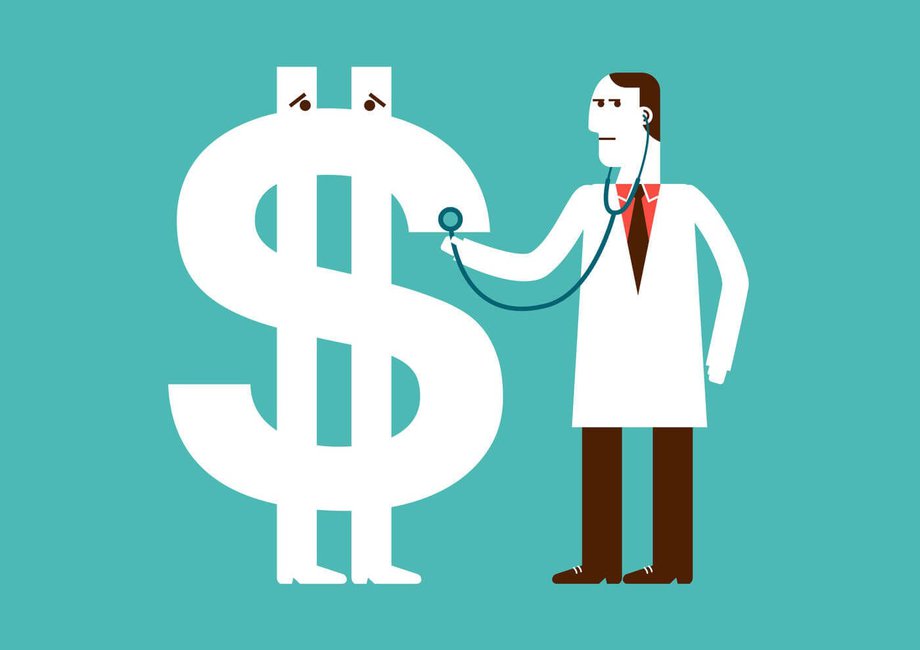Managing Pre-existing Conditions: Lowering Health Insurance Premiums

Are you struggling to find affordable health insurance with your pre-existing conditions? Don’t worry, there are ways you can lower your premiums and get the coverage you need.
In this article, we will explore some effective strategies for managing your pre-existing conditions and reducing your health insurance costs. By understanding the importance of early detection, exploring alternative options, and implementing healthy lifestyle habits, you can take control of your health and finances.
Let’s dive in and find the best solutions for you.
Key Takeaways
- Clear understanding of pre-existing conditions is crucial for managing them effectively and lowering health insurance premiums.
- Early diagnosis and intervention play a significant role in the successful treatment of pre-existing conditions and reducing complications.
- Exploring alternative health insurance options, such as high-deductible plans with health savings accounts or government programs like Medicaid, can provide affordable coverage for pre-existing conditions.
- Implementing healthy lifestyle habits and utilizing preventive care services can potentially lower health insurance premiums and improve overall well-being.
Understanding Pre-Existing Conditions
To better manage your pre-existing conditions and lower your health insurance premiums, it’s important for you to understand the impact they’ve on your coverage options.
By having a clear understanding of your pre-existing conditions, you can take proactive steps to ensure early diagnosis and explore the available treatment options. Early diagnosis is crucial as it allows for timely intervention, increasing the chances of successful treatment and minimizing the risk of complications.
Understanding your treatment options is equally important, as it empowers you to make informed decisions regarding your healthcare. By discussing treatment options with your healthcare provider, you can choose the most suitable approach that aligns with your goals and preferences.
This knowledge won’t only improve your health outcomes but also help you navigate your health insurance coverage effectively.
Importance of Early Detection and Intervention
You should prioritize early detection and intervention for your pre-existing conditions to effectively manage them and lower your health insurance premiums. Regular check-ups play a crucial role in identifying any changes or developments in your health. By scheduling routine visits with your healthcare provider, you can catch potential issues early on and seek appropriate treatment.
Early intervention can significantly improve your health outcomes and prevent the progression of your pre-existing conditions. It allows for timely adjustments in your treatment plan, potentially reducing the need for more expensive procedures or hospitalizations in the future. Additionally, early detection and intervention can lead to better disease management, improved quality of life, and reduced healthcare costs overall.
Make sure to stay proactive in managing your health by prioritizing regular check-ups and early intervention.
Exploring Alternative Health Insurance Options
Consider looking into different health insurance options to explore alternatives that may help lower your premiums while still providing adequate coverage for your pre-existing conditions.
It’s important to find alternative coverage that suits your needs and budget. One option to consider is a high-deductible health plan (HDHP) paired with a health savings account (HSA). HDHPs typically have lower monthly premiums, but higher deductibles. By contributing to an HSA, you can save money tax-free to cover your medical expenses, including those related to your pre-existing conditions.
Another option is to explore health insurance cooperatives or associations that offer more affordable options for individuals with pre-existing conditions. These cooperatives pool resources to negotiate better rates with insurance companies.
Lastly, consider Medicaid or other government programs that provide coverage for low-income individuals.
Exploring these alternative health insurance options can help you find affordable coverage for your pre-existing conditions.
Implementing Healthy Lifestyle Habits
Adopting healthy habits can significantly impact your overall health and potentially lower your health insurance premiums. By incorporating healthy eating and regular exercise into your daily routine, you can improve your physical and mental well-being, reduce the risk of chronic diseases, and potentially save money on healthcare costs.
Here are some benefits of implementing these lifestyle habits:
- Healthy Eating:
- Provides essential nutrients and energy for your body to function optimally
- Helps maintain a healthy weight, reducing the risk of obesity-related conditions like diabetes and heart disease
- Regular Exercise:
- Strengthens your muscles and bones, improving overall physical fitness
- Boosts mood and reduces stress levels, enhancing mental well-being
Utilizing Preventive Care Services
You can lower your health insurance premiums by utilizing preventive care services.
These services are cost-effective measures that focus on early detection of health issues, which can ultimately save you money in the long run.
Cost-Effective Preventive Measures
Utilizing preventive care services is key to managing pre-existing conditions and lowering health insurance premiums. By prioritizing preventive healthcare, you can take proactive steps to maintain your health and prevent the exacerbation of pre-existing conditions.
Here are some cost-effective preventive measures you can consider:
- Regular check-ups: Schedule routine visits with your primary care physician to monitor your health and catch any potential issues early on.
- Vaccinations: Stay up-to-date with recommended vaccinations to protect yourself from preventable diseases.
- Healthy lifestyle choices: Adopting a balanced diet, engaging in regular exercise, and managing stress can significantly improve your overall well-being.
- Screenings and tests: Undergo screenings for conditions such as high blood pressure, cholesterol levels, and certain cancers to detect any abnormalities early.
Early Detection Saves Money
Investing in early detection through preventive care services can save you money on health insurance premiums. By taking advantage of cost-saving strategies and utilizing preventative measures, you can catch potential health issues at an early stage, which can ultimately lead to lower medical costs in the long run.
Preventive care services include regular check-ups, screenings, and vaccinations, all aimed at detecting and preventing diseases before they become more severe and expensive to treat. By addressing health concerns early on, you can avoid costly medical procedures, hospitalizations, and medications. Additionally, early detection allows for timely intervention and management of pre-existing conditions, which can help prevent them from worsening and requiring more expensive treatments.
Long-Term Health Benefits
Taking advantage of preventive care services can provide you with long-term health benefits. By prioritizing regular check-ups and screenings, you can catch potential health issues early on, leading to more effective disease management and improved overall well-being.
Here are two ways in which preventive care services can benefit you in the long term:
- Early detection: Regular screenings and tests can help identify health problems at an early stage when they’re easier to treat. This can prevent the progression of diseases and reduce the need for more intensive and costly treatments later on.
- Promoting wellness: Preventive care services focus on maintaining good health and preventing diseases before they occur. By adopting healthy lifestyle habits and receiving necessary vaccinations, you can lower the risk of developing chronic conditions and improve your long-term health outcomes.
Researching and Comparing Insurance Plans
When researching and comparing insurance plans, there are two important factors to consider: coverage and cost.
You need to carefully evaluate what each plan offers in terms of benefits and services, and compare the premiums and out-of-pocket expenses associated with each plan.
Additionally, it’s crucial to check the network provider availability of each plan to ensure that your preferred healthcare providers are included.
Coverage and Cost Comparisons
To effectively lower your health insurance premiums, it’s essential to conduct thorough coverage and cost comparisons of various insurance plans. By researching and comparing different options, you can find the best coverage options at the most affordable prices. Here are a few steps to help you in your research:
- Start by evaluating your healthcare needs and priorities. Consider the specific coverage options you require, such as prescription medications, specialist visits, or hospital stays.
- Next, compare the cost factors of each plan. Look at the premiums, deductibles, copayments, and out-of-pocket maximums. Assess how these costs align with your budget and potential healthcare expenses.
- Additionally, examine the network of healthcare providers associated with each plan. Ensure that your preferred doctors, specialists, and hospitals are included in the network to avoid additional out-of-pocket expenses.
Network Provider Availability
Researching and comparing insurance plans can help you find the network provider availability that aligns with your healthcare needs and lowers your health insurance premiums. It is important to ensure that the insurance plan you choose provides access to a wide network of healthcare providers, including hospitals, doctors, specialists, and pharmacies. By having network access to a diverse range of providers, you can have more options when it comes to receiving quality care. Additionally, it is crucial to consider the provider reimbursement rates offered by different insurance plans. This determines how much the insurance company will cover for services provided by network providers. By comparing reimbursement rates, you can find a plan that offers fair and competitive rates, ensuring that you can receive the care you need without incurring significant out-of-pocket costs.
| Network Provider Availability | Provider Reimbursement |
|---|---|
| Wide network of providers | Fair and competitive rates |
| Hospitals | Affordable healthcare |
| Doctors | Quality care |
When researching and comparing insurance plans, be sure to carefully review the network provider availability and provider reimbursement rates to make an informed decision that meets your healthcare needs while also saving on your health insurance premiums.
Seeking Financial Assistance Programs
If you’re struggling to afford health insurance, explore financial assistance programs that can help lower your premiums. Here are some options to consider:
- Government programs: Check if you qualify for Medicaid, a state and federal program that provides health coverage for low-income individuals and families. The Children’s Health Insurance Program (CHIP) is another option for children in low-income families.
- Subsidies: Depending on your income level and household size, you may be eligible for premium tax credits through the Health Insurance Marketplace. These subsidies can significantly reduce your monthly premium costs.
Remember to review the eligibility requirements for each program and gather the necessary documentation.
Financial assistance options can provide much-needed relief and ensure that you and your loved ones have access to the healthcare you deserve. Don’t hesitate to reach out and explore these opportunities to make health insurance more affordable for you.
Frequently Asked Questions
Are Pre-Existing Conditions Covered by All Health Insurance Plans?
Yes, all health insurance plans cover pre-existing conditions. This coverage is important as it provides benefits for individuals with pre-existing conditions, ensuring they receive the necessary medical care and support they need.
Can Pre-Existing Conditions Affect the Cost of Health Insurance Premiums?
Pre-existing conditions can impact your insurance premiums. Insurers assess the risk associated with these conditions, which can lead to higher premiums. It’s important to understand how your pre-existing conditions may affect your insurance costs.
How Can Individuals With Pre-Existing Conditions Find Affordable Health Insurance Options?
You can find affordable health insurance options by meeting eligibility criteria. Explore insurance plans that cater to individuals with pre-existing conditions to ensure you receive the coverage you need at a price you can afford.
What Are Some Alternative Health Insurance Options for Individuals With Pre-Existing Conditions?
You have alternative coverage options if you have pre-existing conditions. Look into government programs like Medicaid and Medicare, which can provide affordable health insurance for individuals in your situation.
Are There Any Financial Assistance Programs Available for Individuals With Pre-Existing Conditions to Help With Health Insurance Costs?
There are financial assistance programs available to help individuals with pre-existing conditions manage health insurance costs. Government programs like Medicaid and the Affordable Care Act provide options for affordable coverage and subsidies.








